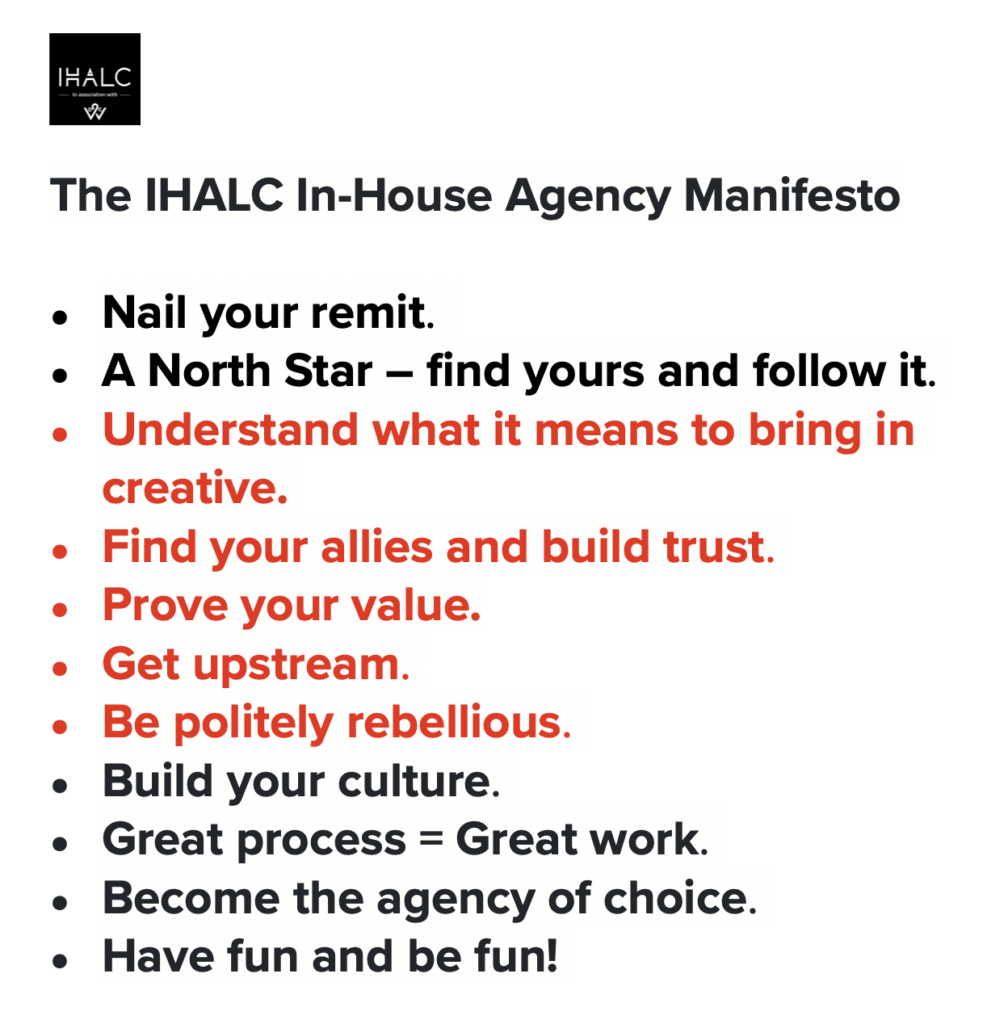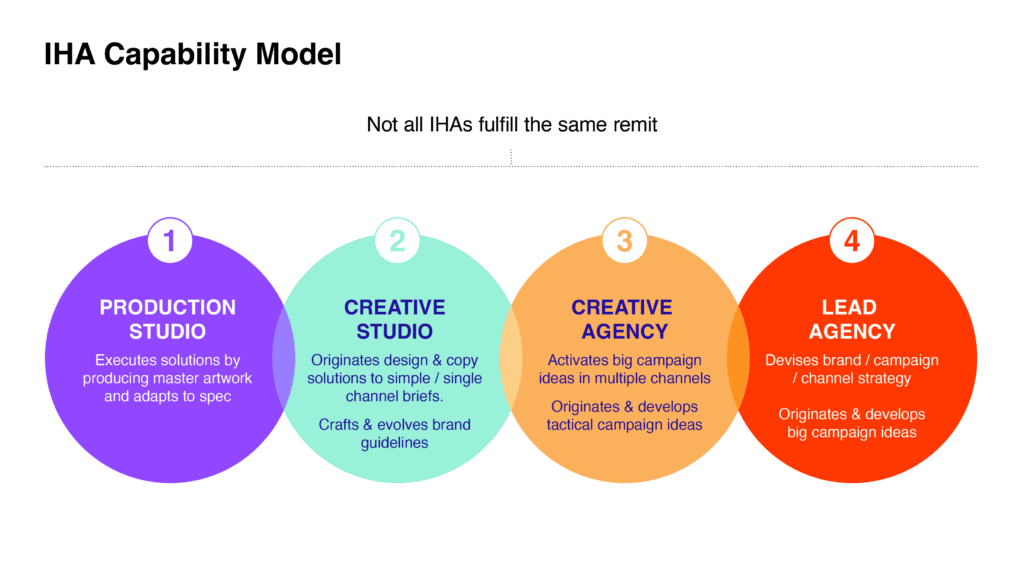An In-House Manifesto: trust and value

We’ve been refining our In-House Agency Manifesto to identify the key principles for success. Our ten point plan was originally drawn up at Campaign’s In-Housing Summit in October. At our last In-House Life session online, we returned to the Manifesto with the help of Arabella Gilchrist, who set up Camelot’s Creative Hub, Natalie Brewster, Director of Global Creative Operations at The Body Shop, Three Creative Director Mat O’Brien and WDC partner John Owen. Our mission – to land on the essential ingredients needed for any In-House Agency to thrive.
You can watch a recording of the session here.
In these newsletters, I’m exploring some of the key points from our session. Last week we looked at North Stars and Remits. This time, we’re debating the importance of the recommendations from our original list that concern building trust and proving the value of an IHA, and how that allows you to get further upstream and start to push for more challenging work.

Let’s start with the essential, but relentless work of getting around the business, finding out what it needs and persuading stakeholders that the IHA can deliver for them.
“In order to find that North Star and nail your remit, you actually need to go and talk to people in the business and find out what it is that they need,” John argued. “Then you can start to open their eyes to all sorts of perhaps different possibilities to what they’ve got in mind. So it’s not a servile, ‘tell us what you need, and we will deliver it’ kind of conversation. It’s a grown up exchange. That’s where it all begins.”
It’s essential to make the effort to listen and understand what different stakeholders feel that they need but also to understand why they might be nervous about working with an in-house team or what the barriers might be in terms of existing external relationships, concerns about budget, or concerns about resource. As John said, “in the process of having that conversation, you’re already starting to build trust. That process never ends, but it has to start somewhere. And I think I think it starts by listening. And it starts by engaging. And it starts by trying to explain what it is that your expertise and the expertise of the team that you want to build will be able to do to help people.”
So even before a remit is arrived at, you are starting to build relationships and trust by involving stakeholders, making them aware that you are there to help them and and that, whatever in-house team is put in place, it’s going to be guided by their needs.
“The first creative brief we had really was ‘how do you build trust with people?’ and it’s different for every single line of business and every single stakeholder,” said Mat. “Once you make a few wins, you start seeing a kind of domino effect through the stakeholders,” he said, as word spreads about what the in-house team can do. “I think we’ve got to a point now where we have allies with the heads of different departments.”
The involvement of existing external agency relationships can actually help, rather than hinder that process. Three works with Wonderhood on above the line, strategic campaigns. For Mat, getting clarity about his team’s role compared to what Wonderhood does was a good way to build trust, “because everyone then could see where we fit into the bigger picture” and knew what to expect.
Something that IHAs often find that they have to do – and which external agencies rarely face – is to educate colleagues as to what they are there for, what their titles and roles mean and how the creative process works. As Natalie said, “it’s something that we face all day, every day.” External agency relationships are typically with the marketing department where their role is understood, as are their ways of working. But the in-house agency can interact with all sorts of departments within a business that have never met a creative agency before. “We have to explain what we do, what a creative director is, an art director, because these are all terms that people just don’t use in their day-to-day”. Even having the term ‘director’ in a job title can be problematic in an organisation where to hold the title ‘director’ implies a certain level of executive seniority.
In our original Manifesto, after “Find your allies and build trust” and “prove your value”, we highlighted the need to “get upstream” and the idea of being “politely rebellious”. All these points are linked but the latter two are particularly important in terms of building the IHA’s reputation and credibility as well as making the transition from being seen as strictly a service to clients to being regarded as an equal partner in solving big business challenges. In that process, Arabella said, it’s important to try to ascertain the degree of bravery that the organisation is ready for.
“Sometimes in an in-house agency, you can start out just giving people what they want. Whereas if you were in an external agency, you might scare them a bit more or push the work a bit further. And I think that’s something that happens over time,” she said. “As you build those foundations, get that level of trust in place, and then use the evidence over time to prove your value, you can start to be more questioning and have those grown-up conversations about how the work could be better. What is the appetite for being brave and scaring people a bit with the work?”

But in order to do that, John argued, you need “an absolutely top drawer creative director”. “You’ve got to have the right calibre of people to have these conversations. You cannot be ‘politely rebellious’. You cannot ‘get upstream’. You cannot do great work if you haven’t got the talent. Preparing the ground for that talent and setting that talent up to succeed is vitally important. Most people want to be challenged, actually. The clients I speak to are more often dissatisfied because they’re not getting challenged, and they’re not getting pushed back on than because they are. It just has to be intelligent, which only comes with experience, and also comes at a price – you get what you pay for. If you’ve got aspirations to play in either the third or fourth of the circles in our IHA maturity model [shown above] , you do have to invest in senior creative leaders.”
Next time, we’ll be looking at the final points in our Manifesto: on culture, how great processes help great work, aspiring to be the agency of choice and why it’s important nit just to have fun, but to be fun to work with.
Watch a recording of our In-House Agency Manifesto session here
